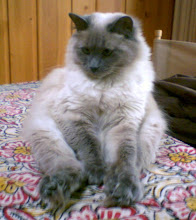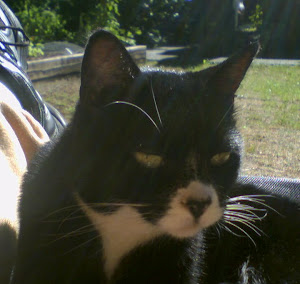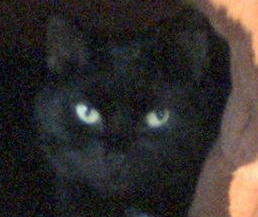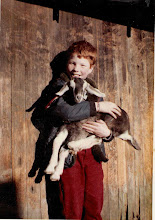 Last week at the library we celebrated some of the exceptional literary works written about and during the 1930s, the era of America’s Great Depression. Our “Depression Era” theme day provided a great opportunity to promote the library and to talk about some of the books we love. Don’t believe me? While I was waiting for the bus, I struck up a lively conversation with two transit regulars who commented on my “migrant worker” overalls. They were enthralled with our theme: “You look just like the train boss in Of Mice and Men,” one commented, “You know, the one who kicks George and Lenny off the train.”
Last week at the library we celebrated some of the exceptional literary works written about and during the 1930s, the era of America’s Great Depression. Our “Depression Era” theme day provided a great opportunity to promote the library and to talk about some of the books we love. Don’t believe me? While I was waiting for the bus, I struck up a lively conversation with two transit regulars who commented on my “migrant worker” overalls. They were enthralled with our theme: “You look just like the train boss in Of Mice and Men,” one commented, “You know, the one who kicks George and Lenny off the train.”Of course, that brings up the point: you really can’t talk about the 1930's Depression without mentioning John Steinbeck. For many American readers,
 Steinbeck's 1939 novel The Grapes of Wrath—simply put—defines the era. To learn more about the history that shaped this moving novel and the research that went into it, read Steinbeck’s The Harvest Gypsies: On the Road to the Grapes of Wrath, comprised of seven newspaper articles Steinbeck published after touring migrant workers camps in 1936 and featuring Dorothea Lange’s stunning photographs of the era. For additional images, check out Restless Spirit: The Life and Work of Dorothea Lange. This beautifully-produced photo-biography presents a compilation of many of Lange’s most famous documentary-style portraits of America’s down-and-outs in the 1930s and 1940s, including her famous "Migrant Mother" that has since come to represent the face of 1930's dust-bowl poverty.
Steinbeck's 1939 novel The Grapes of Wrath—simply put—defines the era. To learn more about the history that shaped this moving novel and the research that went into it, read Steinbeck’s The Harvest Gypsies: On the Road to the Grapes of Wrath, comprised of seven newspaper articles Steinbeck published after touring migrant workers camps in 1936 and featuring Dorothea Lange’s stunning photographs of the era. For additional images, check out Restless Spirit: The Life and Work of Dorothea Lange. This beautifully-produced photo-biography presents a compilation of many of Lange’s most famous documentary-style portraits of America’s down-and-outs in the 1930s and 1940s, including her famous "Migrant Mother" that has since come to represent the face of 1930's dust-bowl poverty.For the more light-hearted: take a peek at '30s fashions in Fashion Sourcebooks: The 1930s, by John Peacock with 281 fashion illustrations from 27 designers set out in a clear year-by-year progression with detailed descriptions of each design at the back of the book. For an overall feel of the times, The 1930s: from the Great Depression to the Wizard of Oz, by Stephen Feinstein, provides fine Eyewitness-style visuals and a general overview of the events of the decade, with chapters devoted to fashion, entertainments, sports, politics, and scientific advances of the era.
Finally, let's not forget some that the hardships of the '30s brought us some of the world's most unforgettable literature. Here are just a few of our favorites: 

Currently out-of-print, Nelson Algren’s 1935 novel Somebody in Boots tells the story of Cass McKay, a gentle but illiterate, depression-era drifter who escapes the poverty, desperation, and violence of his Texas home, only to find more of the same riding the rails through the South and Midwest. The novel depicts a world of relentless starvation and brutality, culminating in a robbery that lands Cass in jail with a cast of other “undesirables.” The boots of the title are both symbols of authority and weapons wielded against the poor and the dispossessed in their struggle for survival. Reviewed by Lisa Tyler.

Harlem renaissance great Zora Neale Hurston's most controversial novel Their Eyes Were Watching God (1937) details the life of one Janie Crawford, a fiercely independent young woman growing up in southern Florida in the '30s. Through three stormy marriages, a hurricane, and a terrifying brush with death when her husband contracts rabies, Janie finds strength in the face of poverty, illness, and tragedy. It may sound like a downer, but it's not: An intensely memorable coming-of-age story, a paean to independence, and a testament to strength in adversity, Their Eyes Were Watching God was criticized in Hurston's lifetime for its honest depiction of life in an all-black community. In the 1970s, Alice Walker revived interest in Hurston's nearly forgotten masterpiece, and now it's considered a classic. It's also one of my personal favorites. Reviewed by Constance O'Shea.

Secretrary of State Sam Reed celebrates the literature of The Great Depression with Collection Management Staff , Kelli Becker, Constance O'Shea, and Lisa Tyler. Photo by Lael Voeller, taken at the Sylvan Way Branch of Kitsap Regional Library.




.jpg)





.jpg)





6 comments:
I love the photo! What a great idea!
Post a Comment